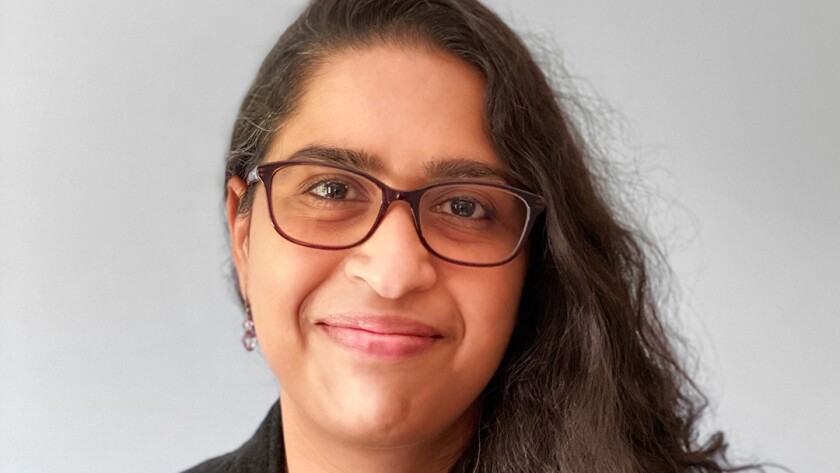[ad_1]
International transactions have long been filled with delays as different parties took time and fees along the journey. Vidya Mani is part of the team that’s turning that around through creative computer programming.
Mani’s the vice president of engineering at RippleNet, which is turning blockchain technology loose on myriad transactions across the globe, creating a smooth path for sellers and buyers in different countries.
What used to be a multi-day process filled with tricky conversions and delays is now nearly instant, low cost and fully digital through the use of blockchain. Cross-border payments are no longer just for large supply chains. It’s open to online marketplaces, small businesses and consumers.
But that’s just the start, as digital currencies and a growing e-commerce industry create new opportunities for the technology experts who can create the machine that powers payments innovation. Mani and her team are creating this future one line of code at a time.
“Since joining the Ripple team, my priority has been to inspire my engineering team to transform the global payments infrastructure and improve the end customer experience through quality code,” said Mani, one of PaymentsSource’s Most Influential Women in Payments for 2021.

Mani’s been in her position for about a year, following six years at Braintree, another firm that has used open development techniques to bring innovation to payments through mobile services like the popular Venmo app. Braintree, a unit of PayPal, has been part of its parent company’s strategy to use tools like software development kits to improve its ability to upgrade payment processing.
But even earlier, computers became one of Mani’s passions. “In high school, I really loved mathematics classes, so my father suggested I learn more about computer science as well. When I wrote my first program it was love at first line of code, and I haven’t stopped since,” Mani said.
Over the years, Mani has jumped back and forth between leading engineering teams and writing code.
“I joined Braintree because I wanted to be a part of its stellar engineering team, and now six years later, I joined Ripple as it was the perfect leadership opportunity for a vision I care so much about personally,” Mani said. “Ripple’s vision is to simplify the way people send and receive money around the world.”
Distributed ledger technologies such as blockchain are most widely known for their use with cryptocurrencies such as bitcoin, and Ripple is active in that market through its association with the XRP token.
But blockchain also underpins other financial activities, such as fraud prevention, authentication and payment processing. As digital transactions and faster payments become more important, banks are paying more attention to different uses for blockchain. But there’s still lots of room for the financial industry to use innovations such as distributed ledgers and hosted software-as-a-service models, according to Mani.
“Despite this eye to innovation, the process of sending money globally is still outdated and tedious, with high exchange fees and money at risk of getting lost along the way,” she said, adding investments in blockchain and cloud technologies are necessary to to keep up with societal changes brought on by COVID-19.
“The application of blockchain technology in payments facilitates faster transactions while fostering instant trust between parties … also, building a cloud-based payments system will allow people to continue to send money globally, instantly, reliably and for fractions of a penny,” Mani said.
The economic shutdowns that accompanied the pandemic have advanced the need for expert programming as digital payments accelerate and governments around the world consider digital currencies to improve processing and bring more people into the financial system. Central bank digital currencies will be one of the major financial developments in the coming years as governments and the private sector figure out how to build CBDCs and make them safe, accessible and interoperable.
“This is creating an opportunity for newer technologies like digital assets to become more integrated into our payments system,” Mani said. “Last year alone, countries around the world began researching and conducting trials of using a digital currency for payments, with the Bank for International Settlements citing more than 80% of central banks are engaged in some work on CBDCs.”
Click here to view the full list of 2021’s Most Influential Women in Payments, or continue reading: Jennifer Philo, Blackhawk Network.
[ad_2]

